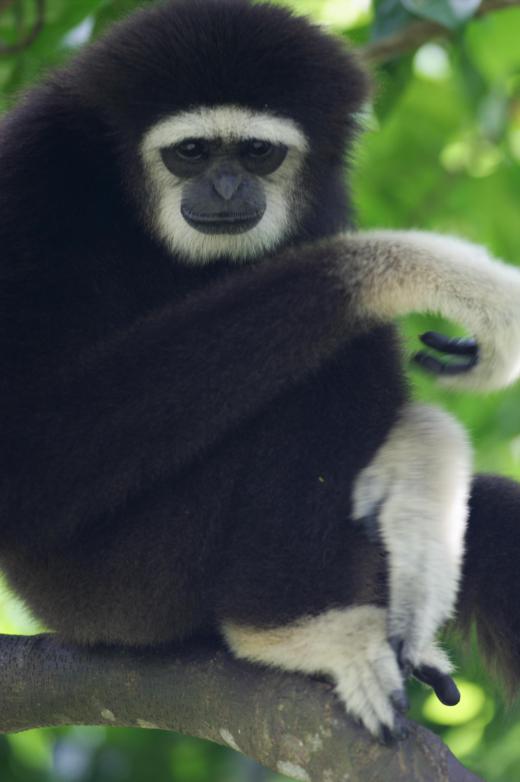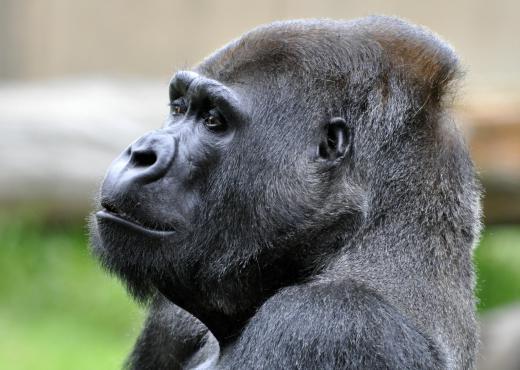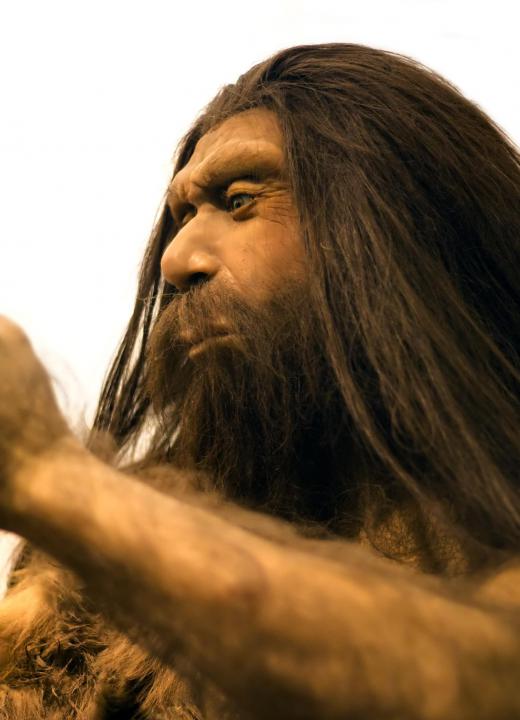What are Apes?
 Michael Anissimov
Michael Anissimov
An ape is any homonoid (member of superfamily Homonoidae). This includes the "lesser apes," 13 species of gibbon, which live in the tropical and subtropical forests of Southeast Asia, and the "great apes," family Homonidae, which includes orangutans, gorillas, chimpanzees, and humans, all of which are closely related. The characteristic features of these animals include large brains and long limbs which are usually adapted for climbing trees. Among these homonoids, only humans and gorillas are poor climbers.
All apes are omnivores, consuming fruit, grass seeds, and occasionally bugs or small animals. Some are vegetarians, like the gorilla, while others engage in hunting, like chimps and humans. Most are social, especially humans, which traditionally live in groups of up to about 200 members, though cities can be arbitrarily large.

Apes evolved out of Old World Monkeys, which have smaller brains and bodies and less social organization. These in turn evolved from arboreal primates that resemble living species such as lemurs. Like their relatives the Old World Monkeys, apes are one of the few groups of animals to have three-color vision, also displayed by marsupials and bees. They largely rely on their astute vision and ability to run away quickly through the trees to avoid predators such as felids and canids. Others, like the gorilla, rely on their size and strength, while humans rely largely on tools.

These animals evolved about 25 million years ago in Africa or Asia, where they remained until humans migrated to Europe and the rest of the world only about 90,000 years ago. Great apes split from the lesser ones about 18 million years ago. Orangutans split from the others about 14 million years ago, gorillas split off about 8 million years ago, and chimps and humans split about 3-5 million years ago. The line that gave rise to humans produced various species, including Homo erectus, which were intelligent enough to use tools and spread across much of modern-day China and India. It is completely unknown whether these early relatives of humans could use complex speech. They may have even been smart enough to build rafts and travel short distances across the ocean.

Most of present-day non-human apes are endangered due to overhunting and the destruction of rainforest habitat. In the entire world, there are about 70,000 orangutans, 300,000 chimpanzees, and 200,000 gorillas. Their numbers have declined greatly in the last century.
AS FEATURED ON:
AS FEATURED ON:














Discussion Comments
What I always thought was sad was that people aren't more interested in protecting the different types of apes. There have been a lot of scientists who have done a lot of research on apes and how they act like humans. Of course, Jane Goodall is the first one that people think of.
Since apes are so much like humans, you would think there would be more compassion for protecting a group of species so close to ourselves. I can understand that the people living in those areas cut down the rainforests for food, but I am talking about the First World doing more. On the other hand, we are constantly engaged in wars and don't care too much about preserving our own species.
@kentuckycat - I agree. You can add to that the fact that there is still plenty of evidence that humans are still evolving. One of the most common examples that is cited is that we have useless organs like the appendix. Now, it just gets in the way and causes problems in some people. The same can also be said about the gall bladder. Although it still serves a function, we don't need it.
I have heard, too, that our little toes are shrinking a little bit each generation. Even though anyone on Earth today is far from seeing humans without 5 toes, I still think it is really interesting. Why was it we had 5 toes in the first place, or why do we only need 4? What was different about the way we walked in the past than today?
I think it is remarkable that some people don't accept the connection between apes and humans. To me it is obvious. We all kind of look similar. We have similar traits and follow similar growth patterns.
Besides that, there is a lot of fossil evidence showing that the earliest types of humans like Homo erectus and Neanderthals looked very much like the apes we have around today.
Obviously, there is the religious aspect, but I think part of the problem is just that we look so much different now, and people can't understand how much change can happen over several million years.
@anon256655 - Using the terminology from the article, I think humans would fall into the wide group of apes. I have never really understood the complete difference, though. I think it all comes down to the taxonomy and how exactly you define apes from other animals.
If you ask one person, they might classify apes as a broad group of hominoids like the great apes and lesser apes. If you ask someone else, they might just call apes something like the chimps and gorillas.
I think the big problem is that the word "apes" is not a scientific description of any one group. It can change depending on the context.
Humans are not apes.
@purplespark: Apes are an interesting species to study. They are so much like us. Apes have large brains and are said to be the most intelligent animals on earth, chimpanzees being the smartest. Besides the gorillas, apes are very efficient in climbing trees.
The gibbon apes are the smallest apes, weighing in at about 10 kilograms and being around 3 feet tall. The gorilla is the largest ape. An adult male weighs in at around 275 kilograms and can be around 6 feet tall.
Great article. I need some more information on apes for a biology project that I am doing. Can anyone provide a few interesting facts on apes?
Post your comments